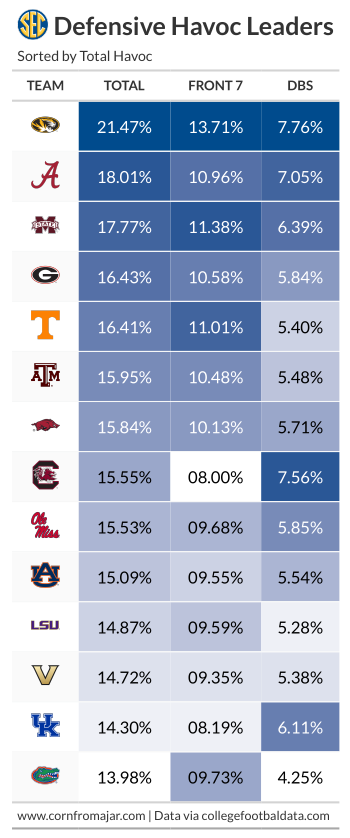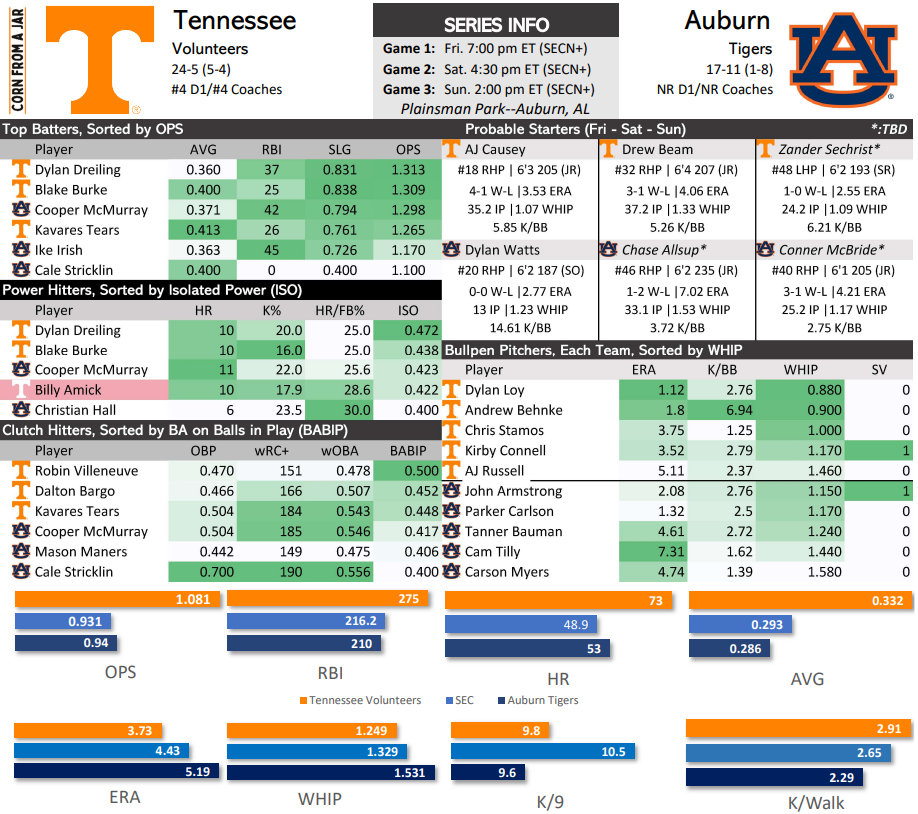2022 Stat Review: Defense
2022 Stat Review: (Part 1: Offensive Line Part 2: Running Backs Part 3: Wide Receivers)
Note: The original plan was to write a review for each position group, but with Fall camp starting soon, it's time to turn the calendar and look ahead to 2023. So this will be the last 2022 Stat Review. One last look to the past before stepping into the future (and you cant spell future without UT).
Let's talk about havoc. It's an advanced stat that measures the percentage of plays where the defense recorded a sack, tackle for loss, forced a fumble, intercepted a pass or broke up a pass. It can be divided between front 7 havoc (TFL/FF) and DB havoc (INT/PBU). It has a badass name. It also seems useful for looking at Tennessee's defense in particular because we know that the Vols are going to have some defensive deficiencies statistically simply because of how fast the offense plays.
So how was Tennessee's 2022 defense in the havoc category? Well I have good news and bad news. And medium news. Overall, the Vols were middle of the pack in the SEC with 16.41% of plays being havoc plays. That's good for #6 in the conference, and basically tied for #5 with UGA's 16.43%. Tennessee's front seven was outstanding in havoc plays, with 11.01% havoc rate clocking in at #3 in the SEC, ahead of Alabama (10.96%) and Georgia (10.58%), but just barely. Not surprisingly, the secondary finished in the bottom third of the league with a 5.40% havoc rate being just 12th best in the conference--though to be fair there's a pretty close grouping from the middle to the bottom of the SEC.
There's a couple of ways to read that DB havoc number. Since UT's offense scores so much, opponents are often playing catch-up, so the Vols' defense sees more pass attempts than the average defense. That means they have to have more INTs/PBUs to keep apace of even the middle-bottom of the conference. On the other hand, because they get more chances to defend passes, so you'd hope they would take advantage of those opportunities and find themselves higher up this chart. Because of the nature of Josh Heupel's program, it's unlikely that UT will ever be at the top of the DB havoc rating, but there is room for improvement in 2023.
A couple more defensive stats to look at: predicted points and explosiveness. In the running backs stat review, I talked about expected points/predicted points: basically a statistical representation of how much a play improves your chances of scoring. Our review of offensive line stats included the definition of success rate: when a play gains 50% of yards-to-go on 1st down, or 70% on 2nd down, or 100% on 3rd/4th down, it is deemed "successful". when you marry those two stats, you get explosiveness, a measurement of the average EPA/PPA gained on plays considered successful.
Obviously, on offense you want these numbers to be as high as possible, and on defense you want to keep them low.
That probably should've been two charts. To break it down, Tennessee had the second best defense at limiting rushing PPA (credit where it's due--UGA held their opponents to an incredible negative predicted points added per play) and the fourth best at limiting rushing explosiveness. Meanwhile the Vols were in the SEC's bottom four in average passing play PPA, but top four in limiting passing explosiveness. And that, kids, is what we call bend but don't break. While that can be frustrating at times for fans, we'll likely see much of the same in 2023.





Comments